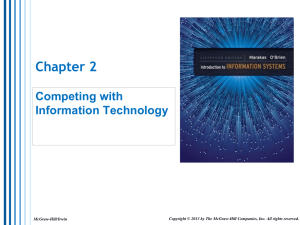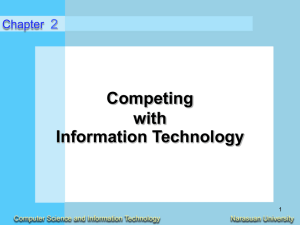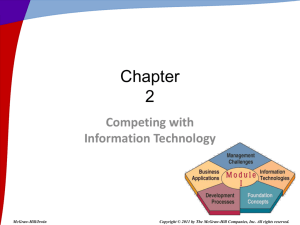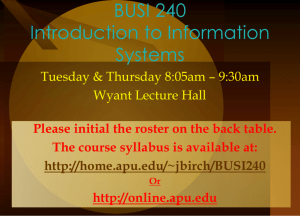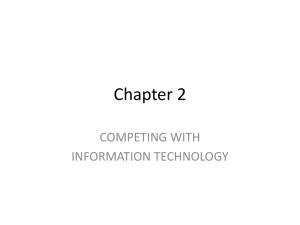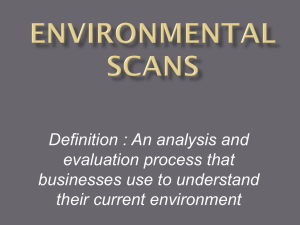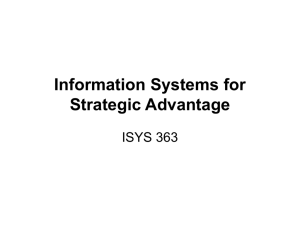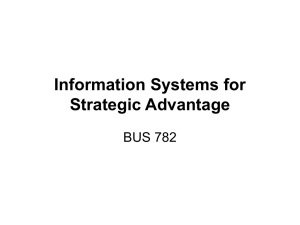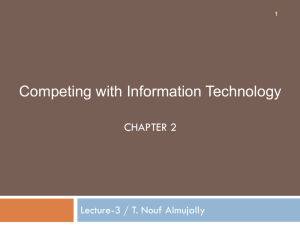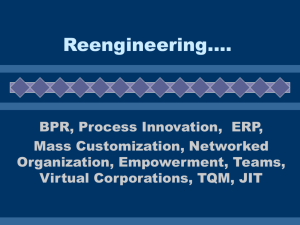Chapter 2
advertisement
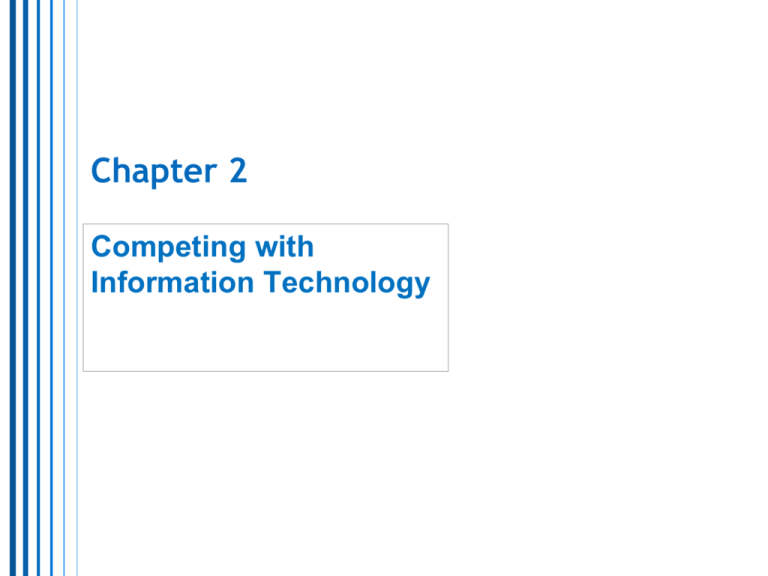
Chapter 2 Competing with Information Technology Does IT provide organizations with a competitive advantage? 2 Long-term competitive strategies Lock in customers/suppliers/partners And lock out competitors Deter them from switching to competitors Build in switching costs Make customers and suppliers dependent on the use of innovative IS Staying a step ahead of competitors Creating “the place” (first mover advantage) Ebay Facebook 3 Competitive Advantage and Competitive Necessity What is Competitive Advantage? What is the problem with competitive advantage? What is Competitive Necessity? What is the relationship between Competitive Advantage and Competitive Necessity? 4 II. Porter’s Competitive Forces Model 5 II. Competitive Strategy Concepts 6 II. Competitive Strategy Concepts 7 IV. Building A Customer-Focused Business – Strategic Focus on Customer Value Recognizing that Quality, not Price, has become the primary factor in a customer’s perception of value Internet technologies can make customers the focal point of ebusiness applications 8 V. Porter’s Value Chain and Strategic IS 9 V. The Value Chain and Strategic IS Value Chain – the series/chain/network of activities that add value to products/services Primary Processes – directly related to manufacture of products or delivery of services Support Processes – business activities that that support daily operations of the firm and indirectly contribute to products/services 10 II. Reengineering Business Processes 11 II. Reengineering Business Processes Business Process Reengineering (BPR) High Potential Payback, but High Risk of Failure Organizational Redesign Process Teams Case Managers The Role of Information Technology – IT plays a major role in BPR 12 To Build or to Buy – Is That Really the Question? What is the traditional answer? Why might reality be more complicated? Why does VISA custom build in-house? Why does VISA busy of-the-shelf? 13 III. Becoming An Agile Company 4 Basic Strategies: Customer Perception of Goods and Services Partnering with Customers, Suppliers, and Even Competitors Organize to Thrive on Change and Uncertainty Leverage Impact of Personnel and Their Knowledge Types of Agility Customer Partnering Operational 14 III. Becoming An Agile Company 15 IV. Creating A Virtual Company Virtual Company – Uses the Internet, intranets and extranets to create virtual workgroups and support alliances with business partners Virtual Company Strategies Share infrastructure and risk with alliance partners Link complimentary core competencies Reduce concept-to-cash time through sharing Increase facilities and market coverage Gain access to new markets and share market or customer loyalty Migrate from selling products to selling solutions 16 IV. Creating A Virtual Company 17 IV. Creating A Virtual Company 18 V. Building a Knowledge-Creating Company Explicit Knowledge – written down or stored on computers Tacit Knowledge – “how-to” knowledge residing in the workers; very important but little incentive to share this information so it is never written down 19 Types of Knowledge (Nonaka, 1994) 20 V. Building a Knowledge-Creating Company Knowledge Management – 3 levels: Enterprise Knowledge Information Creation, Sharing, and Management Document Management 21 VI. Knowledge Management Systems Making personal knowledge available is the central activity of a knowledgecreating company This takes place continuously at all levels of the organization Knowledge management has become a major strategic use of information technology 22 VI. Knowledge Management Systems Goal of Knowledge Management – to create, organize, and disseminate important business knowledge whenever and wherever it is needed in the organization Knowledge Management systems: Facilitate organizational learning and knowledge creation Provide rapid feedback top knowledge workers Encourage employee behavioral change Significantly improve business performance 23
